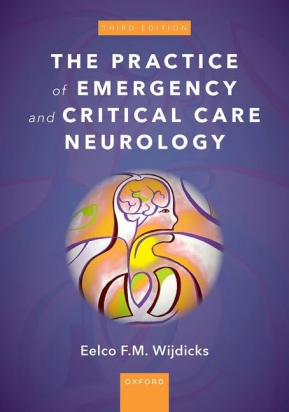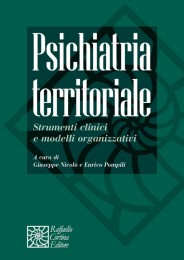Non ci sono recensioni
DA SCONTARE
Published in 1997 as the first single-authored book on critical care neurology, The Practice of Emergency and Critical Care Neurology serves as a comprehensive guide to managing all aspects of critically ill neurologic patients. Following patients from the moment they enter the emergency department, this textbook demonstrates how specialists in the neurosciences assume full responsibility for patient care. Edited succinctly for relevance, this book differs from conventional textbooks by following the time course of clinical complexities as they emerge and change, instead of focusing on just the theoretical aspects of the field. Great emphasis is placed on the management of unstable and deteriorating patients. As any patient presents a unique, complex problem, the book pays special care in describing the considerations behind the rapid-fire decisions that comprise the work environment of the neurointensivist.
In this new third edition, all chapters have been revised with added information and, in some, new concepts and ideas. Key features of this new edition include:
1. Additional chapters on the basics of neuroimaging and its interpretation; basic pharmacology issues in the intensive care setting (e.g., drug interactions and side effects); intoxications; the principles of critical care ultrasound and its relevance in the NeuroICU and the principles of neuro palliation including neuroethics
2. Rich illustrations using color photos of patients and drawings of important basic concepts of mechanisms in diseases of neurocritical care
3. Fully updated and comprehensive reference list
4. Narrated instruction video of the coma FOUR score
Table of Contents
Part I. GENERAL PRINCIPLES OF RECOGNITION OF CRITICALLY ILL NEUROLOGIC PATIENTS IN THE EMERGENCY DEPARTMENT AND NEUROSCIENCES INTENSIVE CARE UNIT
Chapter 1 The Presenting Neurologic Emergency
Chapter 2 Criteria of Triage
Chapter 3 The Responsibilities of the Neurointensivist
Chapter 4 The Organization of the Neurointensive Care Unit
Part II. EVALUATION OF PRESENTING SYMPTOMS INDICATING URGENCY
Chapter 5 "Confused and Febrile"
Chapter 6 "A Terrible Headache"
Chapter 7 "Blacked Out and Slumped Down"
Chapter 8 "See Nothing, See Double, See Shapes"
Chapter 9 "Spinning"
Chapter 10 "Moving, Jerking, and Spasm"
Part III. EVALUATION OF PRESENTING SYMPTOMS INDICATING CRITICAL EMERGENCY
Chapter 11 "Comatose"
Chapter 12 "Seizing"
Chapter 13 "Short of Breath"
Chapter 14 "Can't Walk or Stand"
Part IV. GENERAL PRINCIPLES OF MANAGEMENT OF CRITICALLY ILL NEUROLOGIC PATIENTS IN THE NEUROSCIENCES INTENSIVE CARE UNIT
Chapter 15 General Perspectives of Care
Chapter 16 Agitation and Pain
Chapter 17 Mechanical Ventilation
Chapter 18 Nutrition
Chapter 19 Volume Status and Blood Pressure
Chapter 20 Anticoagulation and Thrombolysis
Chapter 21 Fever and Cooling
Chapter 22 Increased Intracranial Pressure
Part V. TECHNOLOGIES IN THE NEUROSCIENCES INTENSIVE CARE UNIT
Chapter 23 Monitoring Devices
Chapter 24 Transcranial Doppler Ultrasound and Neurophysiology
Chapter 25 Principles of Critical Care Ultrasound
Chapter 26 Multimodal Monitoring and Biomarkers
Part VI. NEUROIMAGING IN THE INTENSIVE CARE UNIT
Chapter 27 Essentials of Neuroimaging
Part VII. MANAGEMENT OF SPECIFIC DISORDERS IN CRITICAL CARE NEUROLOGY
Chapter 28 Traumatic Brain Injury
Chapter 29 Aneurysmal Subarachnoid Hemorrhage
Chapter 30 Ganglionic and Lobar Hemorrhages
Chapter 31 Cerebellum and Brainstem Hemorrhages
Chapter 32 Major Hemispheric Ischemic Stroke Syndromes
Chapter 33 Acute Basilar Artery Occlusion
Chapter 34 Cerebellar Infarct
Chapter 35 Cerebral Venous Thrombosis
Chapter 36 Acute Bacterial Meningitis
Chapter 37 Brain Abscess
Chapter 38 Acute Encephalitis
Chapter 39 Malignant Brain Tumors
Chapter 40 Acute White Matter Disorders
Chapter 41 Acute Obstructive Hydrocephalus
Chapter 42 Acute Spinal Cord Disorders
Chapter 43 Status Epilepticus
Chapter 44 Guillain-Barré Syndrome
Chapter 45 Myasthenia Gravis
Part VIII. POSTOPERATIVE NEUROSURGICAL AND NEUROINTERVENTIONAL COMPLICATIONS
Chapter 46 Complications of Craniotomy and Biopsy
Chapter 47 Complications of Carotid Endarterectomy and Stenting
Chapter 48 Complications of Interventional Neuroradiology
Part IX. EMERGENCY CONSULTS IN OTHER INTENSIVE CARE UNITS
Chapter 49 Neurology of Transplant Medicine
Chapter 50 Neurology of Cardiac and Aortic Surgery
Chapter 51 Neurology of Resuscitation
Chapter 52 Neurology of Overdose
Chapter 53 Neurology of Pregnancy
Part X. CRITICAL CARE SUPPORT
Chapter 54 Shock
Chapter 55 Cardiac Arrest
Chapter 56 Acute Kidney Injury
Chapter 57 Endocrine Emergencies
Chapter 58 ICU Pharmacotherapeutics
Part XI. MANAGEMENT OF SYSTEMIC COMPLICATIONS
Chapter 59 Management of Pulmonary Complications
Chapter 60 Management of Cardiac Complications
Chapter 61 Management of Acid-Base Disorders, Sodium and Glucose Handling
Chapter 62 Management of Gastrointestinal Complications
Chapter 63 Management of Nosocomial Infections
Chapter 64 Management of Hematologic Complications and Transfusion
Chapter 65 Management of Complications Associated with Vascular Access
Chapter 66 Management of Drug Eruptions
Part XII. DECISIONS AT THE END OF LIFE AND OTHER RESPONSIBILITIES
Chapter 67 The Principles of Neuropalliation
Chapter 68 The Practice of Withdrawal of Support
Chapter 69 The Principles of Organ Donation
Chapter 70 The Diagnosis of Brain Death and Organ Procurement
Chapter 71 The Diagnosis of Circulatory Death and Organ Procurement
Chapter 72 Ethical and Legal Matters
Part XIII. FORMULAS, SCALES AND SCORES
Part XIV. GUIDELINES
Part XV. INSTRUCTION OF THE FOUR SCORE (VIDEO)




